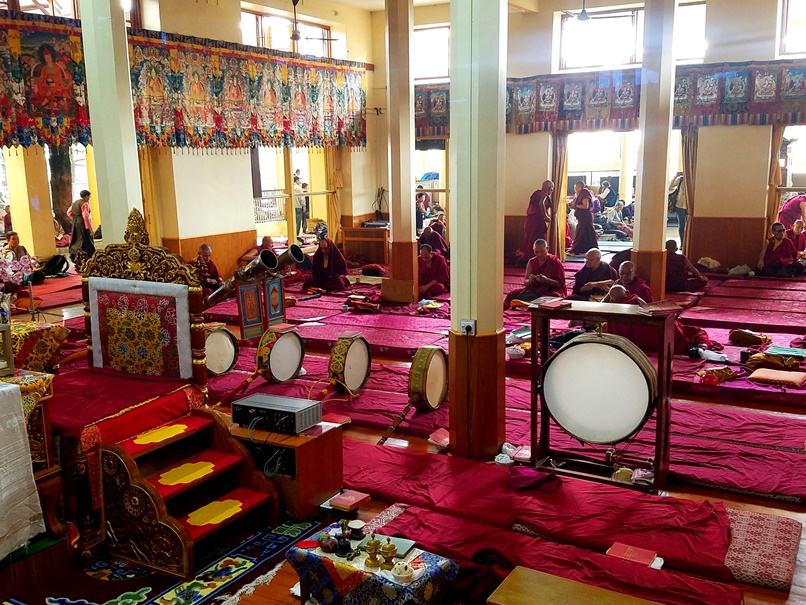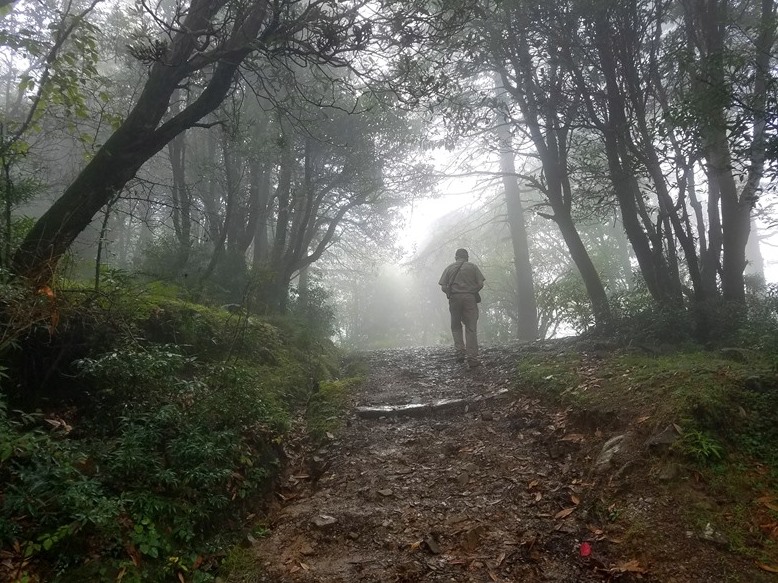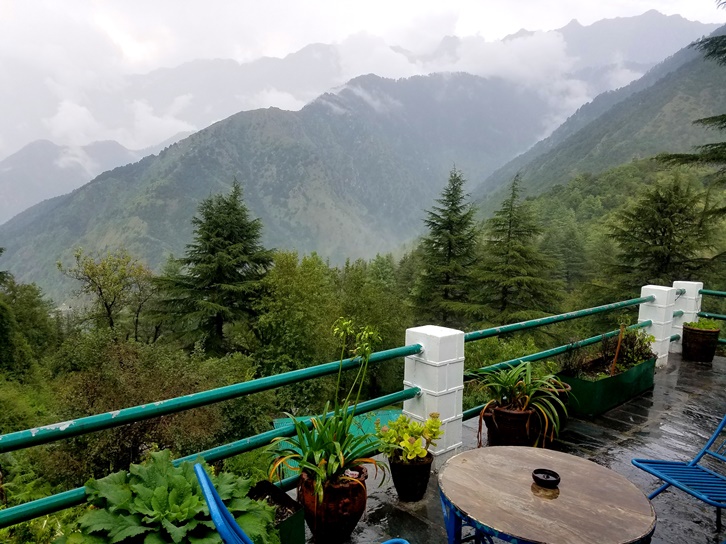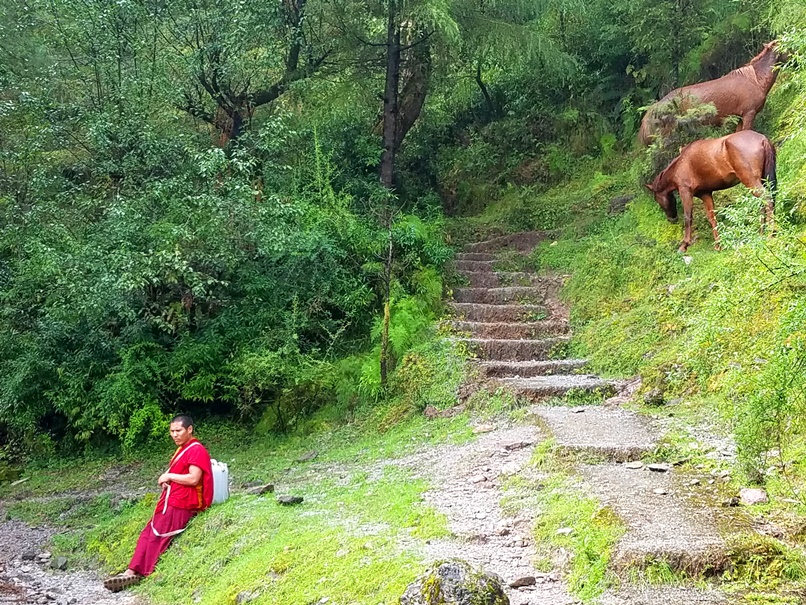Dharamshala And Eagle’s Nest
We arrived under a sky awash in blue at tiny Gaggal airport where our young Nepali driver was waiting to greet us. He set off like a race car driver along the narrow roads, zipping around hair-pin bends where buses, motorbikes, tuk-tuks, carts, and cows, jockey for space and attempt to pass one another on blind curves.
Through lower Dharamshala where the streets are no wider than two tiny cars in width, to McLeod Ganj, home to the Tibetan Community in exile. Nestled in the mountains, McLeod Ganj is a vibrant little town where Tibetan monks wearing ruby-red robes, Indian women draped in brilliant colored saris, backpackers, locals, and tourists, weave around the traffic and cows. The entire village feels more like an intimate open-air market place. Coffee Shops, bakeries, cafés, stores selling an array of Tibetan hand-made crafts, hostels and small hotels, hug the sidewalks.



The Dalai Lama temple complex houses the monastery where the 14th Dalai Lama has resided since he was forced to flee Tibet in 1959. Having visited Tibet this past October, it was heartwarming for us to see a thriving Tibetan community practicing its religion and nurturing the ancient Tibetan culture just across the border in Dharamshala, India.

We spent a half day at Norbulingka, a forty minute drive from Dharamshala. Norbulingka, built in the style of a Tibetan palace and temple, was established in 1990 and takes its name, which means ‘Jewel Park,’ from the Dalai Lama’s summer palace in Lhasa. It is dedicated to the preservation of Tibetan culture.

The doll museum houses a fantastic display of dolls depicting the dress of the various regions of Tibet. In studios dotted around the property, artisans and apprentices practice traditional Tibetan woodcarving, weaving, screen painting, statue-making, and the ancient Buddhist art of ‘thangka’ painting and appliqué.



Beautiful gardens, ponds – where water-lilies and koi fish thrive – a stupa, a small Tibetan hotel, restaurant, and a temple where prayer flags flutter, transport one into the heart of Tibetan culture.

From McLeod Ganj, an upward climb through the forest along a so called ‘road’ – (no more than a path strewn with small rocks) led us ever higher to the foot of the majestic Himalayas. Where the road ended, three wiry, strong, young men were awaiting our arrival. They slung our bags effortlessly onto their backs, and we set off hiking through the fragrant forest, through a fine mist, over a rocky path that led to Eagle’s Nest.


Eagle’s Nest’s owners, Bo and Sheila, have created a unique, remote, hard to reach and totally captivating hideaway in the forest beneath the towering Himalayan Mountains. Here, eagles soar; long-tailed Langur monkeys swing through the Cedar, Himalayan Oak, Rhododendron, and Turpentine trees; wild deer, leopards, and black bear roam.


The mansion wraps its arms around the visitor with its warmth and tasteful decor: an artful blend of Tibetan, Indian and Western flavors.


Each suite has spectacular views of nature. The staff is nurturing, caring, and unobtrusive. The dinners are a five-star gourmet vegetarian treat. Spring water comes from their well; yogurt and milk are supplied fresh from their neighbor’s cows; vegetables from their gardens. At breakfast, homemade bread, plum and rhododendron jam are always served.



We went on an unforgettable early morning horse ride with Sheila; read in the gardens and on our verandah with an ever-present cup of tea beside us; hiked down the steep rocky path to McLeod Ganj, and savored every moment of our time at Eagle’s Nest.


Note: Eagle’s Nest is remote and blissfully peaceful. We loved every moment of our hike from the road through the forest to the guesthouse, but it’s not for those who don’t like to hike and who prefer being in the center of things.
Eagle’s Nest: eaglesnestmcleodganj@gmail.com

Note: The three photos of Tibetan Women, I took the prior year during our visit to Tibet. They are a living example of the hundreds of beautiful dolls in the museum at Norbulingka that depict the richness and diversity of the clothing worn in the different regions of Tibet.
